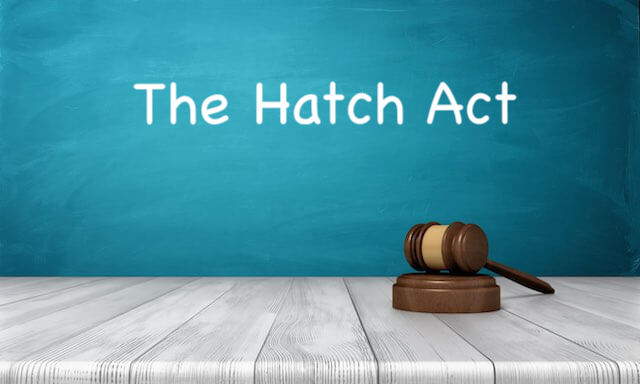Using LinkedIn as a federal employee has become crucial in today’s digital world. Social media usage in the US tells an interesting story. According to Statista social media usage in the US skyrocketed from just 10% of the population in 2008 to 79% in 2019. This shift has changed how professionals build their networks.
LinkedIn is a chance for government employees to expand their reach. The platform’s stats are impressive – someone gets hired through LinkedIn every seven minutes. This makes it a great addition to standard federal hiring sites like USAJOBS.gov. The network’s potential keeps growing. Over 2.4 million federal employees already use LinkedIn, and the Army alone contributes more than 500,000 members.
Federal employees should know the key differences between platforms. USAJOBS needs complete resumes that meet specific requirements. LinkedIn works better with shorter, achievement-focused profiles. This difference matters especially when you have skills that work in both public and private sectors, or when planning career moves between them.
This piece shares valuable tips from professional Linked profile writers about building a strong LinkedIn presence. They explain how to stay visible professionally while respecting federal service guidelines.
Why LinkedIn Still Matters for Federal Workers
Federal workers often wonder if LinkedIn matters when USAJOBS.gov exists as the official government job portal. Notwithstanding this, the numbers clearly indicate that LinkedIn has become vital for federal professionals seeking to advance their careers.
LinkedIn vs. USAJOBS: What’s the difference?
LinkedIn and USAJOBS serve different purposes despite their overlapping functions. USAJOBS lists only federal positions with standard application processes. LinkedIn provides broader networking opportunities beyond job listings. User experience data shows that LinkedIn Job Search scores much higher in ease of use at 9.3 compared to USAJOBS at 7.2. LinkedIn dominates the recruitment space with an 87.84% market share while USAJOBS sits at 0.04%. Job seekers can now find many federal positions on both platforms.
How agencies and hiring managers use LinkedIn
Government agencies now make use of LinkedIn in several ways beyond recruitment:
- Vetting candidates – Hiring managers often check candidates’ LinkedIn profiles before interviews
- Building relationships – LinkedIn helps manage relationships in government contracting
- Agency branding – Departments use LinkedIn to connect with citizens and partners
“The heart of GovCon is building relationships, and LinkedIn is a primary channel for building and managing relationships,” notes one government contracting expert. Agencies also utilize LinkedIn’s recruiter function to connect with candidates possessing specialized skills, rather than relying on traditional application channels.
The growing federal presence on LinkedIn
The federal government’s presence on LinkedIn continues to grow. Right now, 2,863,071 federal employees have LinkedIn profiles across civilian and military agencies. Civilian agencies have surpassed DOD/military presence with 1,587,941 employees on the platform. The U.S. Army leads with 519,250 members, even after a recent drop.
Federal organizations now have 729 agency “company pages” on the platform – 342 for civilian agencies and 387 for DOD and military components. This growing presence demonstrates the increasing importance of LinkedIn to federal organizations.
Federal workers who want to advance their careers can connect with more than 2.4 million colleagues already on the platform. LinkedIn has become essential for those seeking new government positions or planning a move to the private sector.
Building a Strong LinkedIn Profile
A LinkedIn profile acts as your professional digital calling card when you network with federal employees and potential employers. Your profile becomes influential when you pay attention to several core elements.
Choose a professional photo
Start with a clear, high-resolution headshot where your face occupies approximately 60% of the frame. A professional photo makes your profile 14 times more likely to be viewed by others. Selfies or group photos cropped to show just you won’t work. Natural lighting near a window creates the best results, so avoid direct sunlight and keep the background simple and clean. Your photo should reflect your everyday professional self that colleagues would recognize instantly.
Write a compelling headline and summary
A headline should do more than state your job title. You get 220 characters to make an impression, so blend relevant keywords with a personal statement that shows both your expertise and personality. Your summary needs to be concise and easy to read, highlighting how your background prepares you for your next career move. Write in first-person (“I”) to create a more conversational tone.
Highlight your federal experience effectively
Your government experience description should emphasize transferable skills like leadership, project management, and policy analysis that work in any industry. Pick experiences that align with your career goals rather than listing everything.
Add featured content like reports or videos
The Featured section lets you showcase your best work. This space displays LinkedIn posts, articles, external links, and uploaded media. Choose content that proves your skills and accomplishments—such as publications, presentations, or project reports.
Include volunteer work and certifications
Volunteer experience demonstrates valuable transferable skills. Deloitte reports that 82% of hiring managers prefer candidates with volunteer experience, yet only 32% of candidates show this on their profiles.
Request recommendations from colleagues
Recommendations from colleagues who can highlight your specific strengths make a difference. About 85 of 88 hiring managers look at LinkedIn recommendations during hiring. Space out your requests, as recommendations display timestamps.
Networking and Engagement Strategies
A complete LinkedIn profile alone won’t help you build meaningful connections. My experience as a federal employee shows that networking actively brings the best professional rewards. Here are some proven strategies to grow your federal network.
Join professional groups related to your field
LinkedIn Groups serve as virtual watercooler forums where professionals share ideas and connect with others who share similar interests. These groups help you reach third-level connections that would otherwise be hard to find. Federal workers should check out groups like Better Government (12,995 members), GovLoop (4,333 members), and Government 2.0 (9,956 members). These groups stand out due to their high-quality members and engaging discussions.
Follow your agency and sector updates
People view LinkedIn Pages more than 1.5 billion times each month. Your agency’s page updates will keep you informed about new initiatives and help you connect with coworkers. LinkedIn data reveals that Pages grow faster after they reach 150 followers. The platform now hosts 729 federal agency company pages, as more agencies create their official presence.
Engage with posts and share relevant content
Start by spending 10-15 minutes each day reading your feed and adding thoughtful comments. Comments have a greater impact than simple likes. Companies that post weekly updates see 40% more views on job postings and 25% more applications than those who stay quiet. Posts with photos and videos boost engagement by over 74%.
Use LinkedIn messaging to build connections
Make your connection requests personal instead of using standard templates. Build relationships first before asking about opportunities. Note that when employees share content, it gets twice the click-through rate of original updates and can be 60 times more valuable than company-only posts. Real networking on LinkedIn means building genuine relationships, not just collecting connections.
Security and Professionalism on LinkedIn
As a federal employee who regularly uses LinkedIn, my role requires me to be extra cautious about striking the right balance between being professionally visible and maintaining security. LinkedIn provides me with amazing networking opportunities, but I need to follow special federal guidelines that don’t apply to individuals in the private sector.
Avoid sharing sensitive or classified information
Working for the federal government means I have strict rules about confidentiality. Before I post anything about my work projects, I carefully check that I’m not sharing sensitive details. This goes beyond just classified stuff – it includes internal processes, draft policies, and private meetings too. My rule of thumb is to wait until information becomes public before I mention it on my profile.
Understand Hatch Act implications
The Hatch Act affects how federal employees use LinkedIn a lot. These rules allow me to display my official title and political affiliation in my profile. However, I am not permitted to use my position to post messages that support or oppose political parties or candidates.
Keep in mind that LinkedIn profile headlines show up with almost everything we do on the platform. Having official titles there means we can’t post any political content. Additionally, the Hatch Act prohibits us from engaging in political activities while at work or in federal buildings, including social media activities such as posting, blogging, retweeting, or liking partisan content.
Keep your profile updated but neutral
A professional profile needs regular updates to stay accurate. Every three months, I read through my entire profile to make sure everything looks right. Federal employees should think twice about using official titles on some platforms since people might see it as federal endorsement. Everything you put on LinkedIn shapes your professional reputation – good or bad.
Be cautious with connection requests
My approach to connection requests is pretty strict – I stick to professional contacts rather than personal ones. Security is a big deal, so I change my social media passwords often and always log out when I’m done. This helps protect my personal information and keeps my professional network safe from unauthorized access.
Conclusion
LinkedIn gives federal employees a robust platform to advance their careers alongside traditional government channels. This piece shows how successful leaders utilize this professional network while directing their path through federal service.
Federal workers encounter unique challenges on LinkedIn compared to their private sector peers. They need to focus on security protocols, Hatch Act compliance, and agency representation. Despite that, the advantages are nowhere near these hurdles.
Your digital professional identity stems from an impactful profile. A combination of photos, headlines, and experience descriptions highlights your expertise while keeping appropriate boundaries. This carefully built presence connects you with 2.8 million federal colleagues on the platform.
Building valuable professional relationships happens through groups, agency pages, and thoughtful involvement. These connections create pathways to mentorship, knowledge sharing, and career growth that traditional government channels may overlook.
Without a doubt, LinkedIn plays a vital role in federal career growth. Your LinkedIn presence demonstrates professional dedication and broadens opportunities, whether you aim to advance within the government or plan a move to the private sector.
A successful LinkedIn presence needs a balance between visibility and discretion. Federal guidelines exist with good reason, too, but they shouldn’t stop you from making meaningful professional connections.
Many federal employees find real value on LinkedIn through 729 federal agency pages and millions of government colleagues. Your smart participation creates opportunities while upholding federal service’s professional standards.



